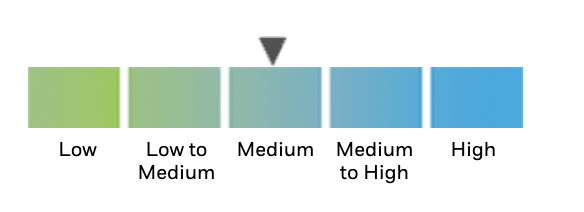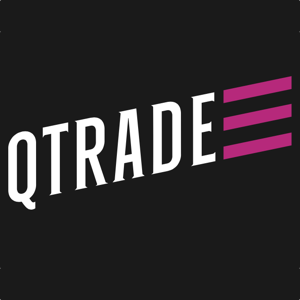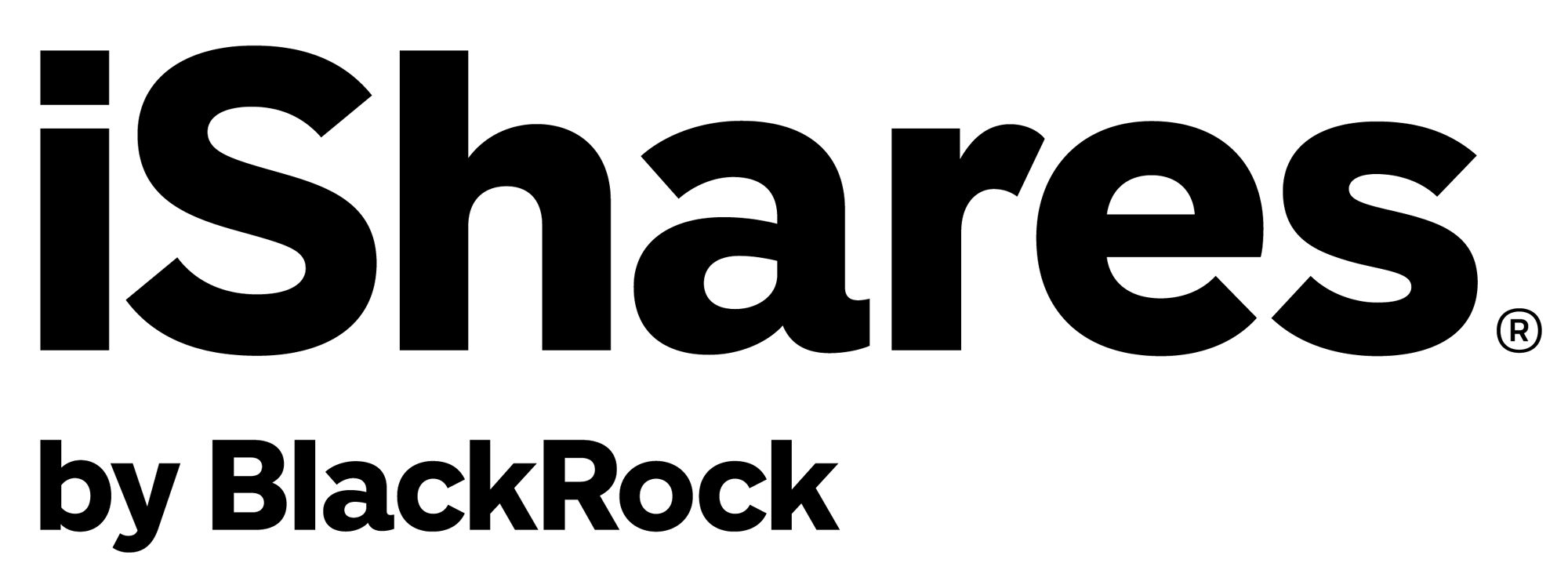Want to invest in Canadian companies? You can pick and choose Canadian stocks, or go the easy way and buy a Canadian Equity ETF.
iShares XIC is one of those types of ETFs.
Check out this iShares XIC ETF review to see if it’s a good fit for your portfolio.
All-Equity Exchange-Traded Fund
BlackRock iShares XIC is an Exchange-Traded Fund (ETF) that provides you with exposure to the largest Canadian companies trading on the TSX.
- Very low MER
- Allows you to own the entire Canadian stock market
- Designed as a long-term core investment
- Overweighted in a small number of sectors
BlackRock iShares XIC ETF is an exchange-traded fund that provides investors with long-term capital growth by duplicating the performance of the S&P/TSX Capped Composite Index, net of expenses.
As an all-equity ETF, BlackRock iShares XIC ETF is a medium-risk investment. It effectively tries to follow the performance of the entire Canadian stock market.
Launched in 2001, the BlackRock iShares XIC ETF is one of the oldest ETFs with an extensive performance history.
XIC.TO is currently trading at close to $32.85.
XIC Key Facts
As of October 5, 2023:
- Ticker Symbol: XIC.TO
- Exchange: Toronto Stock Exchange
- Assets Under Management: $8.4 Billion
- MER: 0.06%
- 12-Month Trailing Yield: 3.37%
- Currency Traded: CAD
- Registered Accounts Availability: Yes
iShares XIC has a very low Management Expense Ratio (MER) at 0.06%.
It is less pricey compared to many other ETFs with similar exposure to the financial sector.
It also costs a lot less than some of the closest comparable ETFs in terms of investment objectives and asset allocation.
Its MER is also significantly lower than any mutual fund product that provides investors with similar features and benefits. With the average mutual fund fees being 2% or higher, ETFs offering lower MERs—like iShares XIC—is a crucial reason why many Canadians prefer ETFs over mutual funds in recent years.
iShares XIC’s dividend yield as of October 5, 2023:
- 12-month trailing yield: 3.37%
- Distribution yield: 3.58%
- Dividend schedule: Quarterly
Here’s the hypothetical growth of XIC if you had invested $10,000 since inception:

As of September 30, 2023:
| 1y | 3y | 5y | 10y | Incept. | |
|---|---|---|---|---|---|
| Average Annual Return (%) | 9.47 | 9.85 | 7.27 | 7.51 | 6.60 |
| Benchmark (%) | 9.54 | 9.88 | 7.27 | 7.54 | 6.67 |
Go to the Blackrock website for real-time performance numbers of XIC.
iShares XIC is one of the oldest ETFs in existence, and it set the pace for other ETFs to follow. The all-equity ETF diversifies its asset allocation across several sectors of the Canadian economy.
As of October 05, 2023, iShares XIC ETF has allocated most of its funds to Canadian equity securities.
| Asset Class | Investment | Category | Index |
|---|---|---|---|
| Canadian Equity | 97.96 | 91.76 | 99.14 |
| U.S. Equity | 1.55 | 2.47 | 0.51 |
| International Equity | 0.22 | 0.48 | 0.35 |
| Fixed Income | 0.00 | 0.35 | 0.00 |
| Other | 0.00 | 3.74 | 0.00 |
| Cash | 0.26 | 1.40 | 0.00 |
As of October 06, 2023, Royal Bank of Canada is its most significant holding at 6.33%. It is followed closely by The Toronto-Dominion Bank, at 5.33% and Enbridge Inc at 4.09%.
| Name | Sector | Weight (%) |
|---|---|---|
| ROYAL BANK OF CANADA | Financials | 5.80 |
| TORONTO DOMINION | Financials | 5.30 |
| CANADIAN PACIFIC KANSAS CITY LTD | Industrials | 3.35 |
| ENBRIDGE INC | Energy | 3.32 |
| CANADIAN NATURAL RESOURCES LTD | Energy | 3.32 |
| SHOPIFY SUBORDINATE VOTING INC CLA | Information Technology | 3.17 |
| CANADIAN NATIONAL RAILWAY | Industrials | 3.12 |
| BANK OF MONTREAL | Financials | 2.85 |
| BANK OF NOVA SCOTIA | Financials | 2.57 |
| BROOKFIELD CORP CLASS A | Financials | 2.20 |
XIC is heavily invested in the financial, energy, and industrials sectors:
As of October 5, 2023:
| Type | Fund (%) |
|---|---|
| Financials | 30.21 |
| Energy | 18.17 |
| Industrials | 13.63 |
| Materials | 11.45 |
| Information Technology | 7.52 |
| Consumer Staples | 4.38 |
| Utilities | 4.10 |
| Communication | 3.79 |
| Consumer Discretionary | 3.69 |
| Real Estate | 2.33 |
| Cash and/or Derivatives | 0.43 |
| Health Care | 0.31 |
XIC is a medium risk ETF:

iShares XIU is another ETF that you can consider investing in if you want to track the Canadian stock market’s performance.
However, iShares XIU ETF has a significant difference with iShares XIC ETF: iShares XIU ETF holds only the top 60 companies trading on the TSX in its portfolio based on market capitalization.
Compare that to 219 companies for iShares XIC ETF, and you can see that iShares XIU ETF offers you a more focused exposure to the top Canadian companies.
Moreover, the top 10 holdings account for around a third of iShares XIC ETF’s total portfolio, while the top 10 holdings in iShares XIU ETF make up around half of its complete portfolio.
iShares XIU ETF can be a viable alternative to iShares XIC ETF if you want exposure to a more growth-focused basket of Canadian stocks.
However, you also run the risk of individual asset performances impacting the entire ETF’s performance and returns more significantly.
Horizons HXCN is another ETF to consider investing in if you want to track the Canadian stock market’s performance.
As an ETF product offered by Horizons, it seeks to replicate the same underlying index as iShares XIC ETF. Hence, the ETF’s entire holdings and top ten holdings are similar to iShares XIC ETF.
However, a notable difference between the two ETFs is that Horizons HXCN has a slightly lower MER of 0.05%. Another difference worth noting is Horizons HXCN’s inception in 2020. Because it is newer than iShares XIC ETF, it does not boast the kind of past performance that iShares XIC ETF has.
All in all, Horizons HXCN could be a viable alternative to iShares XIC ETF because of its slightly lower MER.
The cheapest way to buy ETFs is from discount brokers. My top choices in Canada are:

- 105 commission-free ETFs to buy and sell
- Excellent customer service
- Top-notch market research tools
- Easy-to-use and stable platform

- Stock and ETF buys and sells have $0 trading fees
- Desktop and mobile trading
- Reputable fintech company
- Fractional shares available
To learn more, check out my full breakdown of the best trading platforms in Canada.
If you’re looking to invest in the Canadian markets, XIC has one of the largest AUMs in the country for this index.
It’s a solid choice for a Canadian equity ETF, and one I would recommend adding to your watchlist.
Not sure about what ETF to choose? Check out these other iShares ETFs that might work for you.





